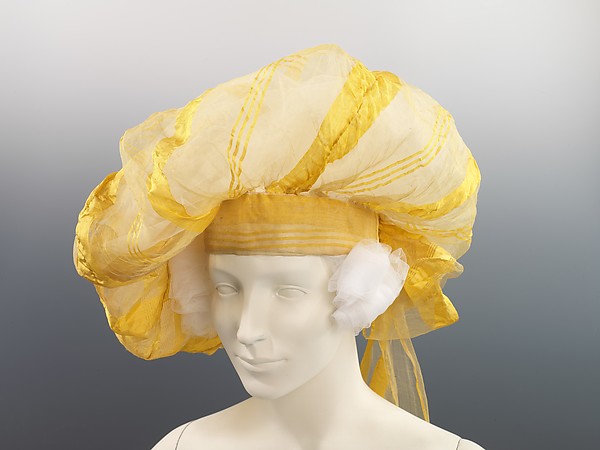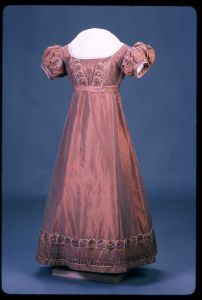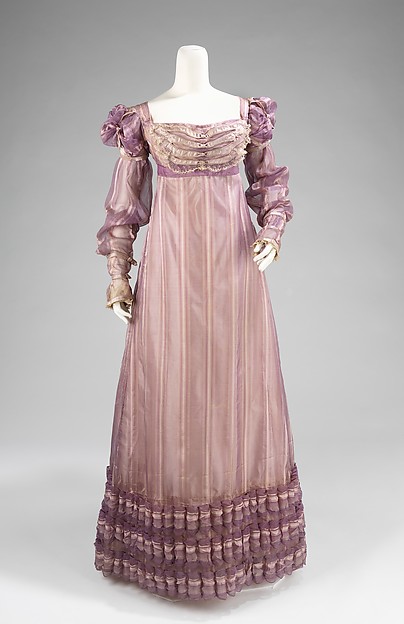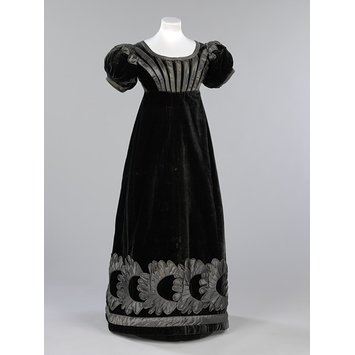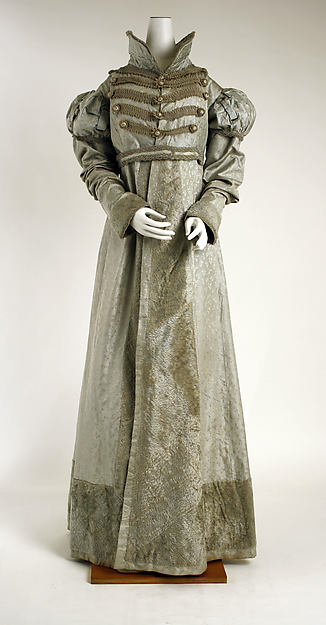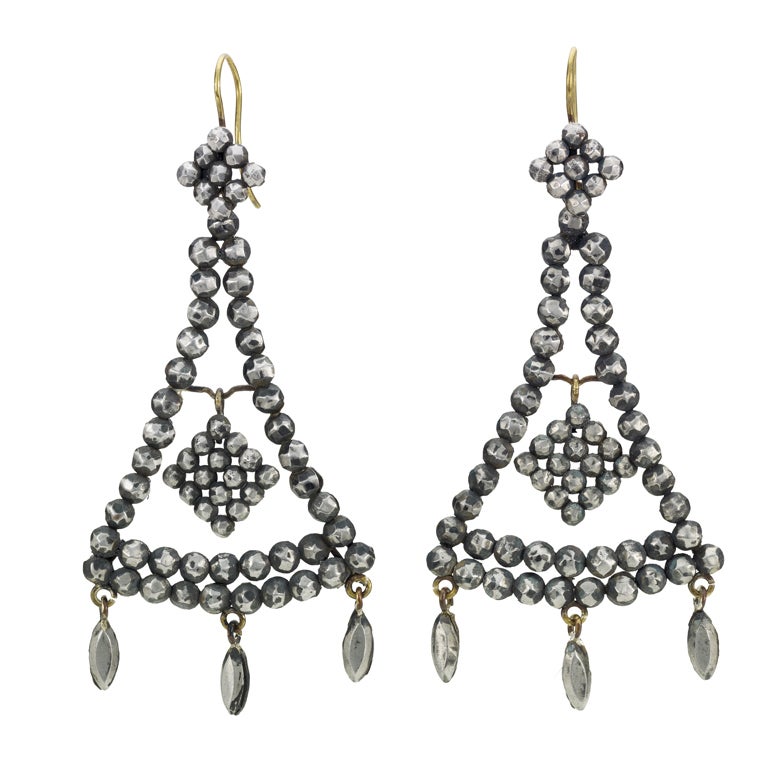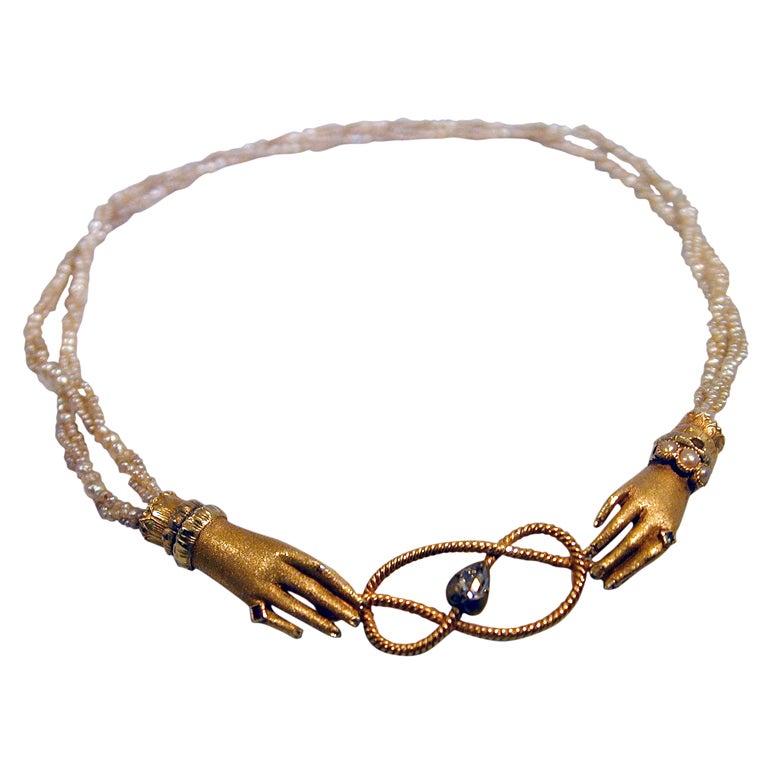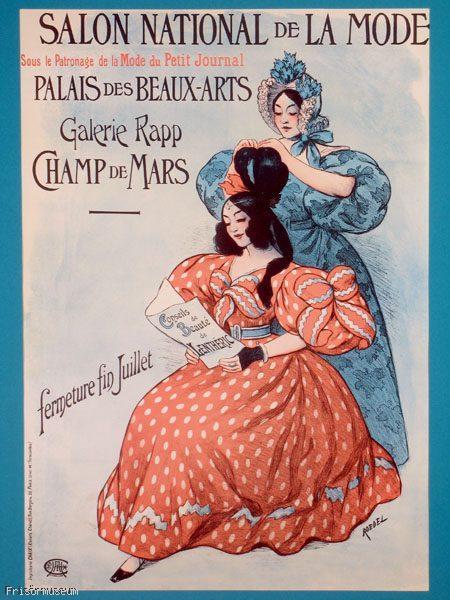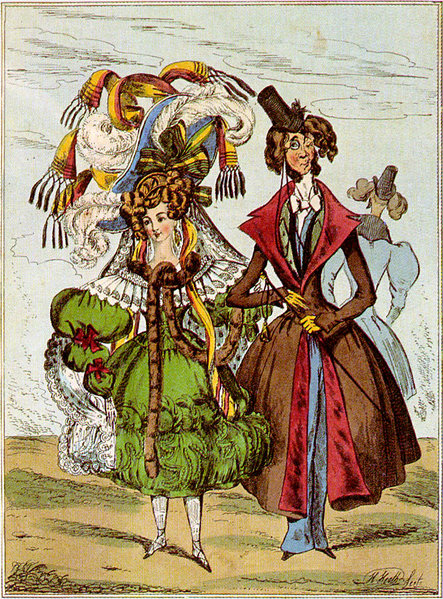 |
| Gurl! Get a Chemisette on...Mr. Knightley doesn't want your sunburned shoulders! |
In particular, I want to introduce you to some...or should I say a few (because they're aren't many) that concern the time period we've been talking about in relation to the book Sophie du Pont: A Young Lady in America...the 1820's and 30's. So, there isn't a whole lot out there to satisfy your wish of watching leg-o-mutton sleeves (Gigot sleeves in 1830's speak) grace the silver screen, but I'll share with you the ones I know...please feel free to share any other suggestions. Keep in mind the list is in no particular order...shall we begin?
Wives & Daughters - 1999 miniseries, joint production of BBC & WGBH Boston, starring Justine Waddell, Bill Patterson, Francesa Annis, Anthony Howell (*sigh*) and many other familiar BBC faces. An adaptation of Elizabeth Gaskell's novel, Wives and Daughters: An Everyday Story, the story centers around Molly Gibson, the headstrong and quirky daughter of a widowed country doctor and her struggles with a wicked stepmother, beautiful stepsister and love. In my opinion, it's a great movie and they did a very good job with the costuming, especially for this little understood time period. Much of Molly's wardrobe is a bit more 1820's in style, while her Stepmother and Stepsister wear the height of 1830's fashion with huge gigot sleeves and elaborate hair pieces. This speaks to Molly's simple but elegant taste and her character. Keep in mind, that during much of the 19th Century being too fashionable was often seen as reflective of a character flaw...selfish, greedy, vain, etc. In addition to the lovely costumes the story is great...true to form of Mrs. Haskell's work. If you love Cranford then you should enjoy Wives & Daughters. Here's a few examples of extant dresses that remind me of Molly's simple style...
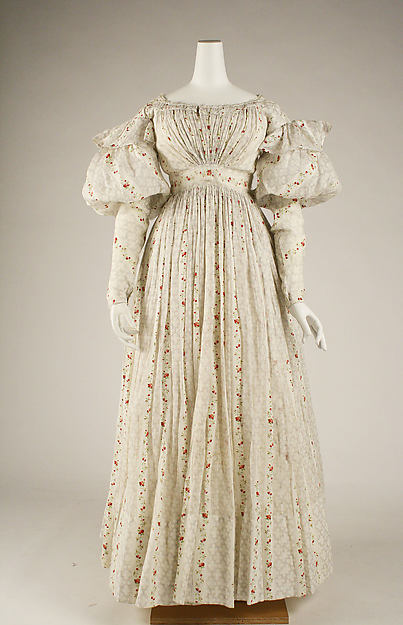 |
| Cotton dress, British, c.1827 MET Collections |
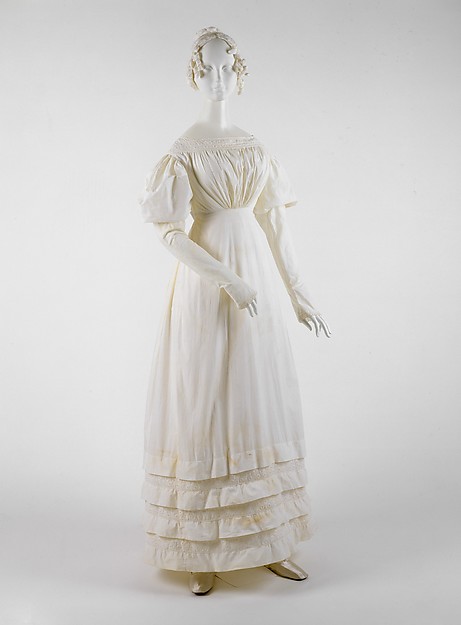 |
| American or European, 1830's MET Collections |
 |
| Cotton dress 1825-1835 Tasha Tudor Collection - Augusta Aucti |
 |
| George Eliot (Mary Anne Evans) Click here for a great article from the New Yorker on Eliot's childhood home, Griff House. |
 |
| The fashionably annoying Rosamond |
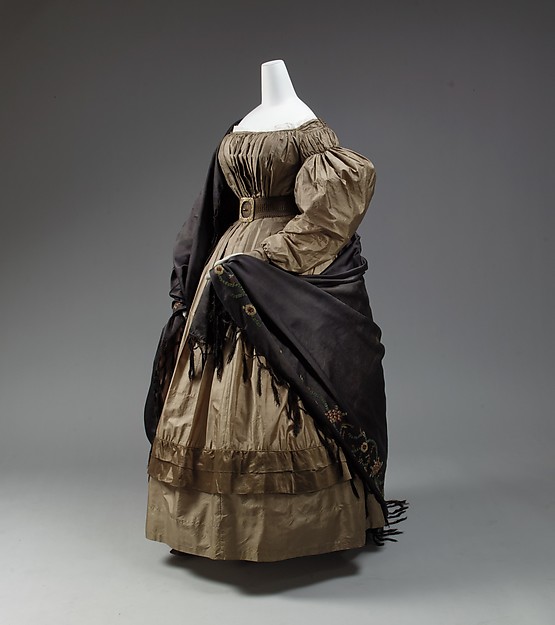 |
| Intellectual Dorthea would stick to elegant and sensible dark silks with little adornment. European, 1832-35, silk, MET |
 |
| Fashionable and vain Rosamond would go for the extra-large puffs! British, ca.1830, cotton walking dress, MET |
Little Dorrit - The 2008 miniseries production of BBC and WGBH Boston is an adaptation of Charles Dickens' serial novel by the same name. The novel was originally published between 1855 and 1857, consisting of 19 monthly installments at a cost of about a shilling each. The story centers around Amy Dorrit and her father who both live in the infamous debtors prison Marshalsea. The story twists and turns as Dickens is prone to do so you'll just have to watch the series (or better yet read the book) to know what happens. There have been a few adaptations of the novel, however the most recent one is at the top of my list. The cast includes Claire Foy, Matthew Macfadyen, Bill Patterson (again), Tom Courtenay and a whole slew of characters that'll keep you going..."wait, wasn't that, yep it was", through every episode. Little Dorrit (click on the link for a great article about the inspiration for Amy's character) is one of my favorite costume dramas. I admit I'm biased because I love pretty much any Dickens adaptation, but more than that it was just great costuming (with some occasional minor missteps). The novel begins in 1826 and this particular adaptation did a great job in conveying the fashion changes of the period...the wealthier folks wear the latest styles of increasingly puffy sleeves and large bonnets, while the elderly or the poor still sport empire fashions. Also, the characters were portrayed in large part by their clothing. Sweet, kind and giving, Amy is neatly dressed and lovely, but slightly out of fashion in her higher-waist dresses and narrower skirts. Meanwhile, her sister, a dance hall girl, flirts her way into getting fashionable clothes though decidedly lacking in taste. It's fitting that big lug John Chivery, assistant turnkey of Marshalsea, puts on his best clothes complete with a fetching belcher to profess his love of Amy.
 |
| Tough, but well mannered, Jem Belcher might just smack you for belching |
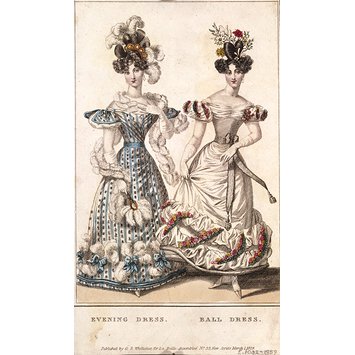 |
| Amy Dorrit might not be caught dead in such an ensemble...but I might! |
The Young Victoria - Now, of course we can't leave out a recent fave of many costume drama devotees...The Young Victoria. A feature film, released in 2009 and starring
 |
| "The Old Victoria" just didn't have the same ring to it... |
 Emily Blunt, Rupert Friend and Paul Bettany, it wowed us with stunning sets and costumes. Who didn't envy the Queen's wardrobe..and those hairstyles? But...I'm not the biggest fan of Queen Victoria so I had significant issues with the story line and characters that big, puffy sleeves just couldn't overcome. Plus, the movie is set in 1836 and by that point the styles are beginning to change once again toward the pointed bodices and cleaner lines of the 1840's, style changes that owed much to Victoria's influence...did I say I'm not a big fan of the big Queen V? I did enjoy the movie, but it's one of those that I probably won't watch over and over again. Some of the costuming ..such as the sheer bonnets were dead accurate and much of that owed to the stalker like reporting of what Queen Victoria wore at every public appearance and of course to the talents of Oscar winning costume designer, Sandy Powell (she won one for this film). If you're in search of great costume eye candy of the 1830's (mostly the later 1830's) and sappy romanticism, then The Young Victoria is your movie!
Emily Blunt, Rupert Friend and Paul Bettany, it wowed us with stunning sets and costumes. Who didn't envy the Queen's wardrobe..and those hairstyles? But...I'm not the biggest fan of Queen Victoria so I had significant issues with the story line and characters that big, puffy sleeves just couldn't overcome. Plus, the movie is set in 1836 and by that point the styles are beginning to change once again toward the pointed bodices and cleaner lines of the 1840's, style changes that owed much to Victoria's influence...did I say I'm not a big fan of the big Queen V? I did enjoy the movie, but it's one of those that I probably won't watch over and over again. Some of the costuming ..such as the sheer bonnets were dead accurate and much of that owed to the stalker like reporting of what Queen Victoria wore at every public appearance and of course to the talents of Oscar winning costume designer, Sandy Powell (she won one for this film). If you're in search of great costume eye candy of the 1830's (mostly the later 1830's) and sappy romanticism, then The Young Victoria is your movie!  |
| The bald mannequins totally creep me out! (Costumes from The Young Victoria) |
 |
| Oh, hunky young Ewan...can you save this movie from absolute awfulness? |
| French, about 1830, MFA Boston |
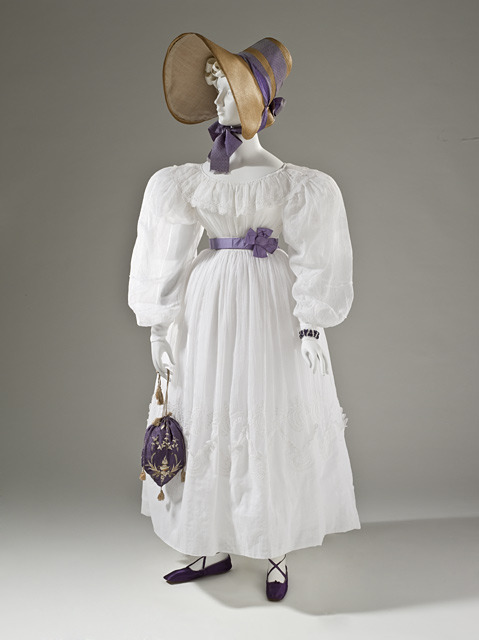 |
| ca.1830, LA Museum of Art |
In case that's not enough for you, here are a few more
films that contain some 1820's/30's, but not quite enough
to be a full-fledged costume drama for this period...
Les Miserables (pretty much any adaptation, musical or not) -
Victor Hugo's classic is set in the 1830's, unfortunately there's not a whole lot of cutting edge fashion in French prisons! I thouroughly enjoyed the new musical-based release and there are some other great adaptations of the novel...you'll find a review of them here. The version
released in 2000 with Gerard Depardieu as Jean Valjean and John Malkovick as Javert (heck yeah!) got great reviews and is available on Netflix.
Jane Eyre - While most of the story takes place in the 1840's, the really scary part...Jane's childhood is set in the 1830's. Multiple adaptations are available with at least two on Netflix and the most recent version, released in 2011 is on DVD.
 |
| Swashbuckling ensues! |
the 2002 version with the fella...you get eye candy in the way of Guy Pearce and Jim Caviezel and he gets sword fights and the beautiful Mercedes, played by Dagmara Dominczyk. The downside is with all the swashbuckling going on there's not much time for pretty dresses.
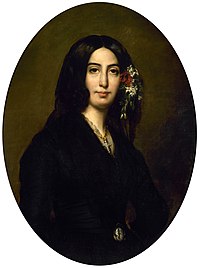 |
| George Sand not in pants |
Impromptu - 1991 film starring Hugh Grant and Judy Davis that is set in 1830's France and examines the strained relationship between composer
Frederic Chopin and the authoress George Sand. Sand was one tough lady and to show it she often wore men's clothing...hence the lack of lovely 1830's ladies fashions in this odd, but likable film.
This list is no means exhaustive...I left out many older movies simply because the costuming tends to be a general "old timey" look and not necessarily period specific. You can find Middlemarch, Wives & Daughters, Impromptu, Scarlet and Black, and various versions of Les Miserables and Jane Eyre on Netflix. Happy watching and feel free to share your own favorite 1820's/1830's costume dramas!




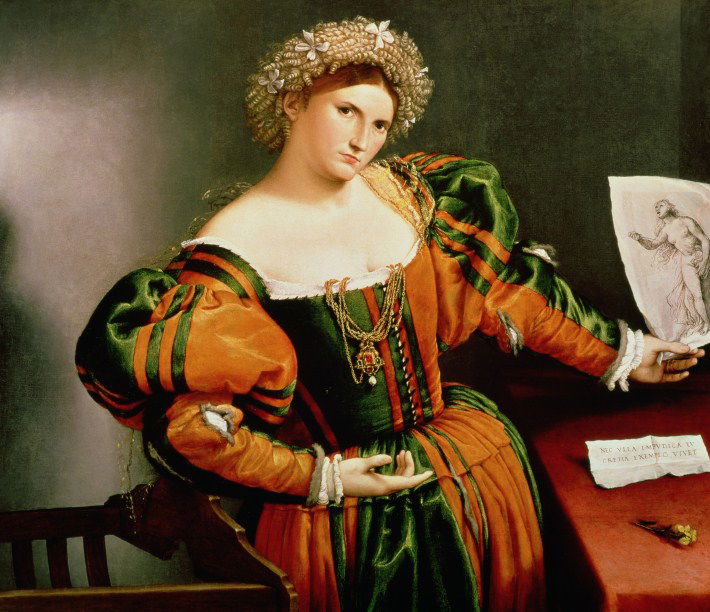
.jpg)

